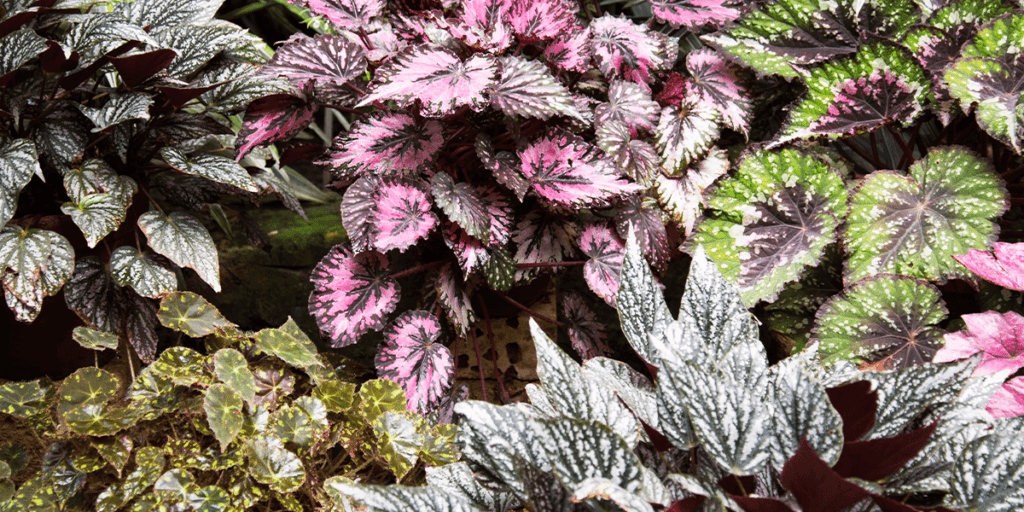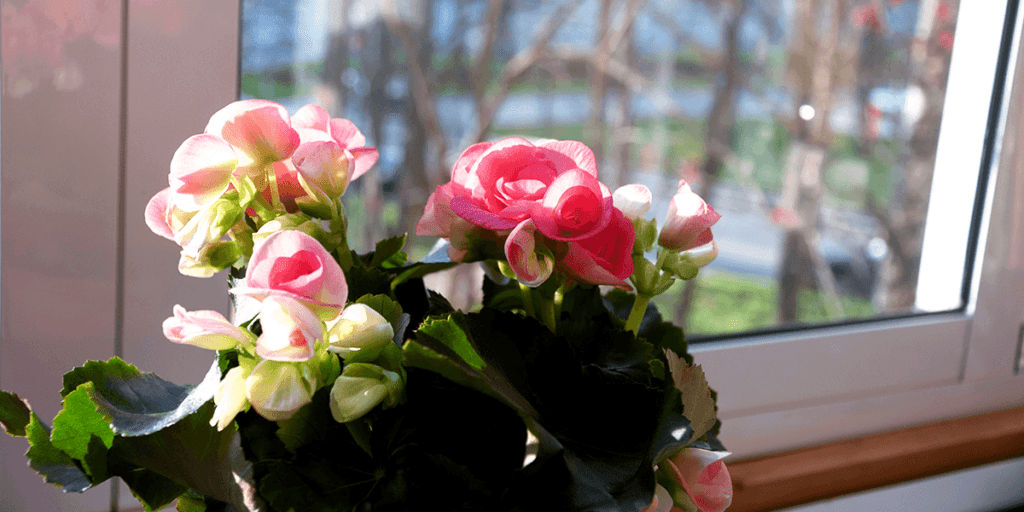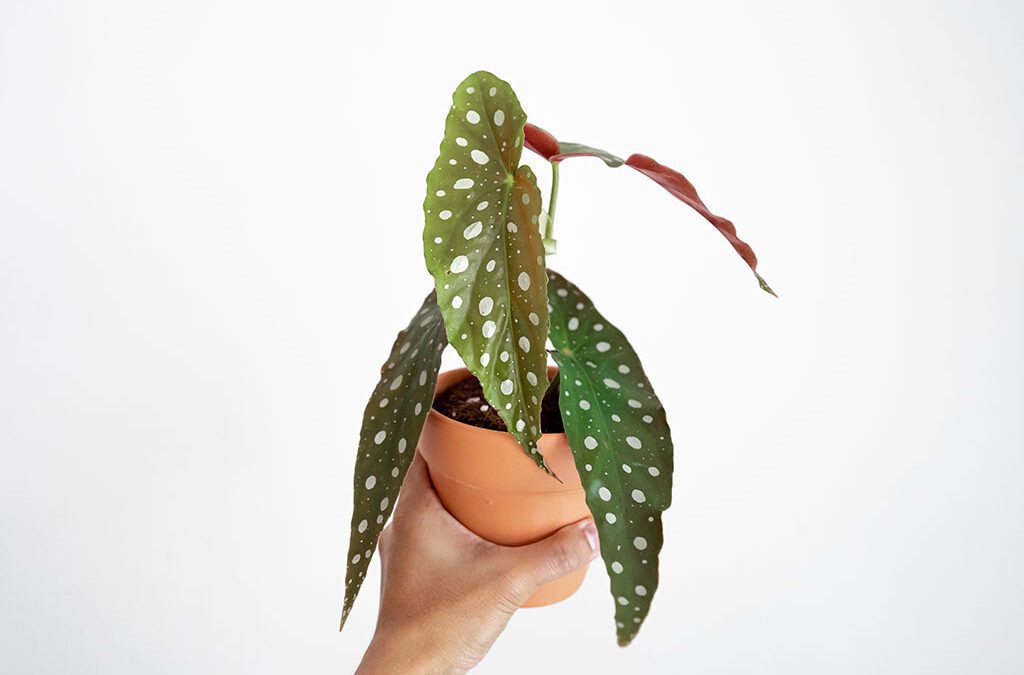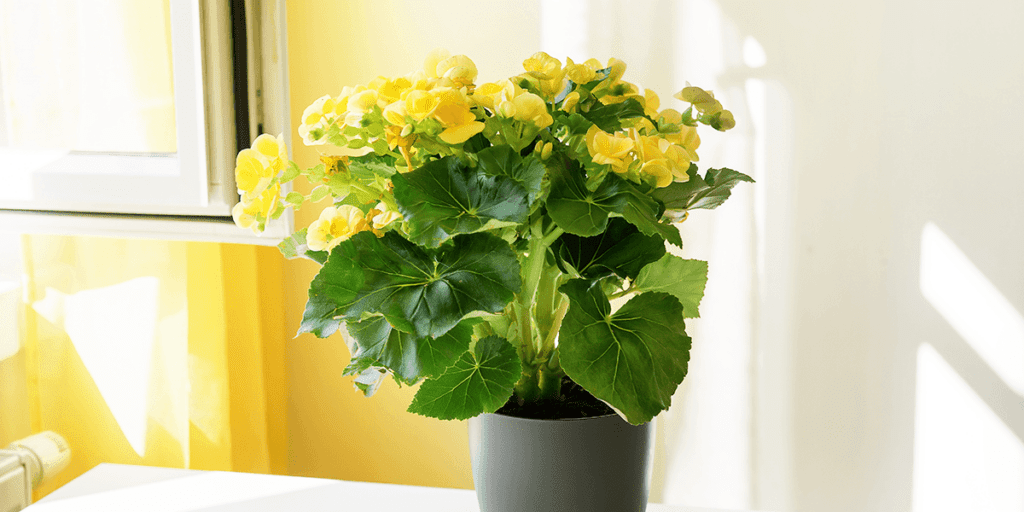So you’ve mastered the snake plant and the indoor herb garden? It’s time to add beautiful flowers and flashy foliage to your home. Begonias are popular outdoor annuals for the garden, but they make elegant indoor plants as well. Here’s how to master indoor begonia care!
What is a Begonia?
Begonias are prized for their luscious flowers of pink, apricot, red, yellow, and white hues. In many varieties, the bright petals bloom above mysterious burgundy and dark green leaves. As a shade-tolerant plant, they bring exquisite color to dark corners of a garden. This penchant for shade makes them a good candidate for a houseplant.
Summer-blooming begonias make ideal annuals for the garden. Others, like Rieger begonias, flower during the winter months. You can purchase these houseplants from your garden center year-round!

What are the Different Kinds of Begonias?
There are over 2000 species of begonias found in all of the subtropical and tropical regions of the world. From these wild species, hundreds of varieties have been cultivated for gardens. Some have lush, rose-like flowers; others have no flowers at all, but instead have showy leaves with burgundy streaks, silver polka dots, purple undersides, and many other vibrant displays.
How Do You Take Care of Begonias Indoors?
It’s always good to follow the specific care requirements for your variety. Overall, a few rules of thumb apply when caring for all indoor begonias.
Best Locations for an Indoor Begonia
Whether they’re on a table, bookshelf, or in a macrame hanging basket, the key is to give them indirect, bright light. That means a spot where they receive about as much light as possible, without direct exposure to the sun. That could be near a window that doesn’t receive direct rays, or a bright window covered by a sheer curtain.
Water Care for Indoor Begonias
Begonias thrive in evenly moist soil, but can be susceptible to root rot. The best care is to water them once the top inch of soil is dry, which you can easily check with your finger. To ensure that the soil doesn’t stay excessively wet, take care to have an appropriately-sized pot, roughly the same size as the plant’s root ball.

Pruning Care for Indoor Begonias
Just like your outdoor begonias, you’ll have to give indoor ones a bit of grooming. That means removing spent flowers so the plant can direct energy to new leaves and blooms. You’ll also want to trim away dead leaves to prevent infections, and thin the foliage to encourage airflow if the plant gets too dense.
Soil Care for Indoor Begonias
An ordinary potting mix works well for indoor begonias. If you find they need more drainage, you can mix in some perlite. When repotting, only bump up the begonia to the next largest pot size, just as you would with other houseplants.
How Much Do You Fertilize Indoor Begonias?
To encourage healthy and productive growth, fertilize your begonias once per month with a fertilizer dissolved in water. When their growth slows down during the winter, they don’t need a boost again until the spring.
At the end of the day, begonias are an easy plant to care for indoors. Once you master their needs for water and sunlight, and keep them healthy with pruning and fertilizer, they’ll reward you with magnificent displays of leaves and flowers!
Platt Hill Nursery is Chicago’s premier garden center and nursery.



